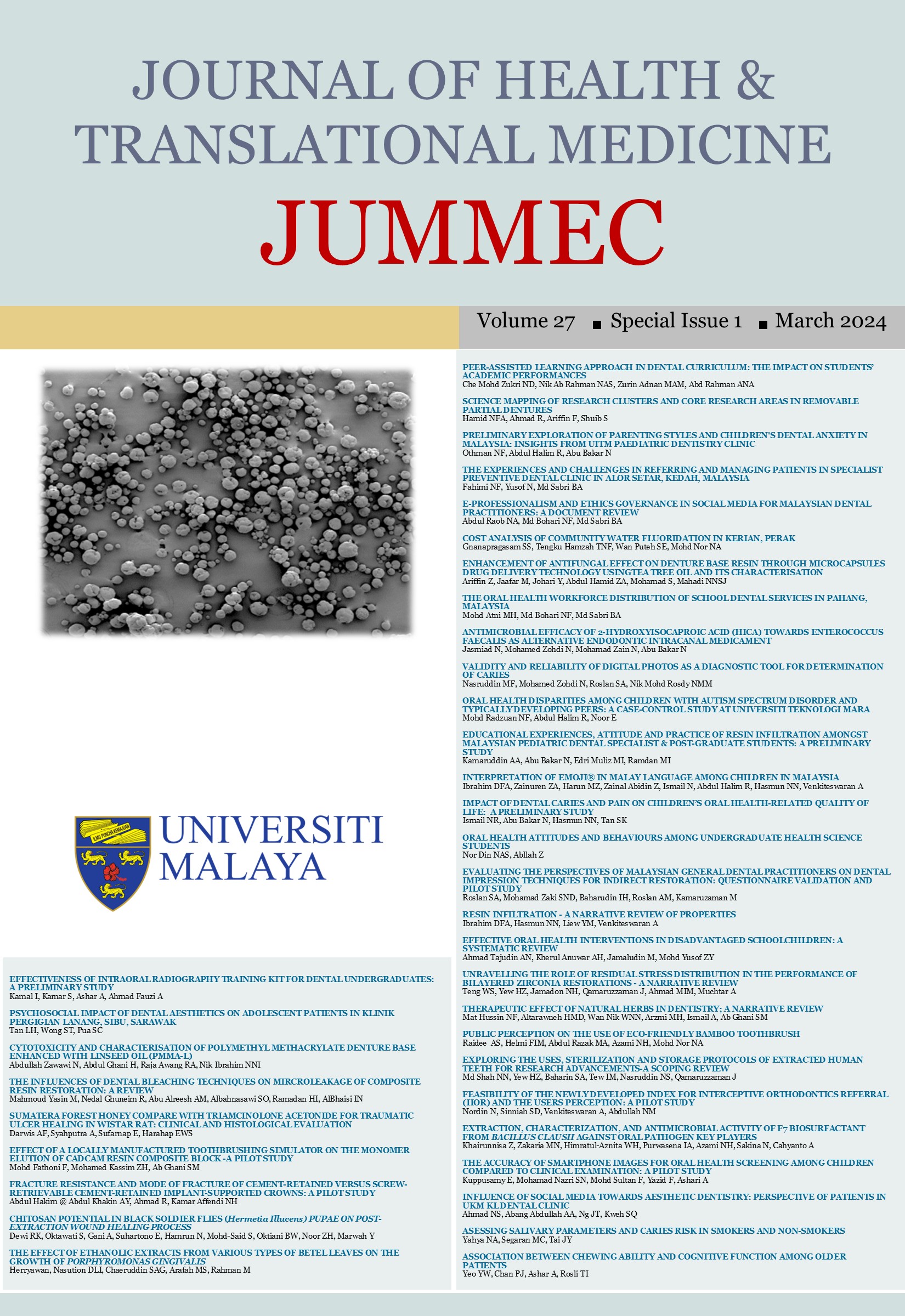THE INFLUENCE OF DENTAL BLEACHING TECHNIQUES ON MICROLEAKAGE OF COMPOSITE RESIN RESTORATION: A SYSTEMATIC REVIEW
Received 2024-03-01; Accepted 2024-03-07; Published 2024-03-25
DOI:
https://doi.org/10.22452/jummec.sp2024no1.32Abstract
Dental bleaching is a popular and conservative aesthetic technique used to whiten discolored teeth. However, there are concerns about the adverse effects of bleaching on composite restorations, such as color change, decreased bond strength, and microleakage. This review aims to evaluate the influence of tooth bleaching on composite restoration microleakage and to investigate the suggested methods used to prevent microleakage in composite restorations. A comprehensive search was conducted using four databases - PubMed, Scopus, Web of Science, and EBSCOhost - using a list of core keywords that included: ((Bleaching OR Whitening) AND ("dental adhesives" OR bonding OR "total-etch" OR "Self-etch" OR "total etch" OR "Self etch”) AND (Dental OR Enamel OR Dentin)). The inclusion criteria were in-vitro experiments written in English that involved composite restoration microleakage as the primary outcome due to bleaching. Of 1524 articles from the initial search, 18 were eligible for this review. Among the two major groups included in the study, the post-restorative bleaching group demonstrates highly varied results on the occurrence of microleakage. Conversely, the pre-restorative bleaching group indicates that bleaching materials can adversely affect the marginal integrity of the composite restoration. It was suggested that the resulting microleakage can cause problems such as recurrent caries and postoperative hypersensitivity and may be due to the natural bleaching mechanism depending on the oxidation reaction to remove the stains on the tooth surface. This releases oxygen and free radicals, and the residual oxygen on the tooth surface may inhibit the resin polymerization and lead to microleakage but can be overcome by the help of antioxidant materials, such as sodium ascorbate. This review provides substantial evidence from the literature on the preventive mechanism of composite microleakage and precautionary techniques when bleaching on composite restorations.
Downloads
Downloads
Published
Issue
Section
License
All authors agree that the article, if editorially accepted for publication, shall be licensed under the Creative Commons Attribution License 4.0 to allow others to freely access, copy and use research provided the author is correctly attributed, unless otherwise stated. All articles are available online without charge or other barriers to access. However, anyone wishing to reproduce large quantities of an article (250+) should inform the publisher. Any opinion expressed in the articles are those of the authors and do not reflect that of the University of Malaya, 50603 Kuala Lumpur, Malaysia.


